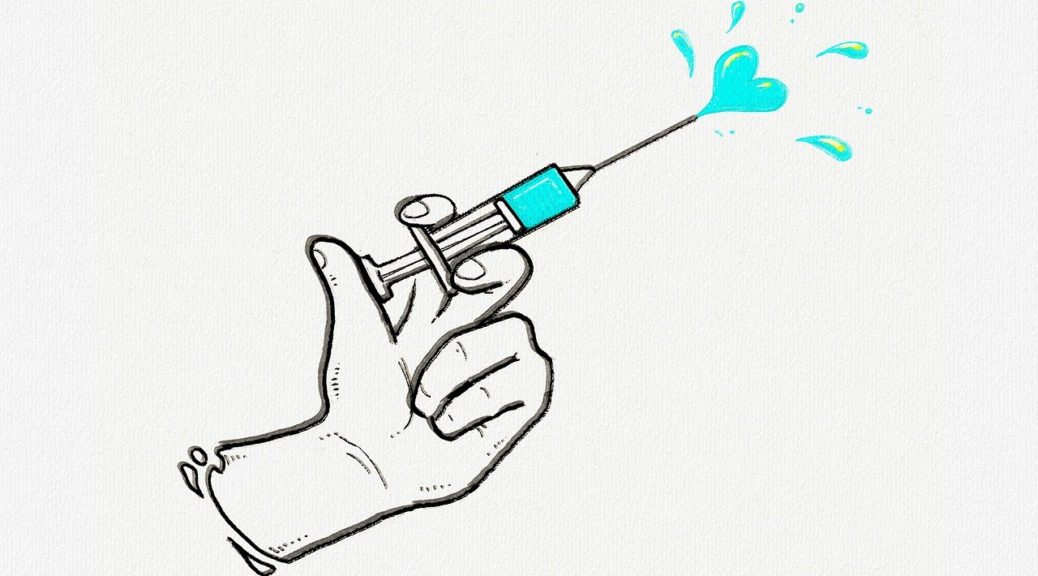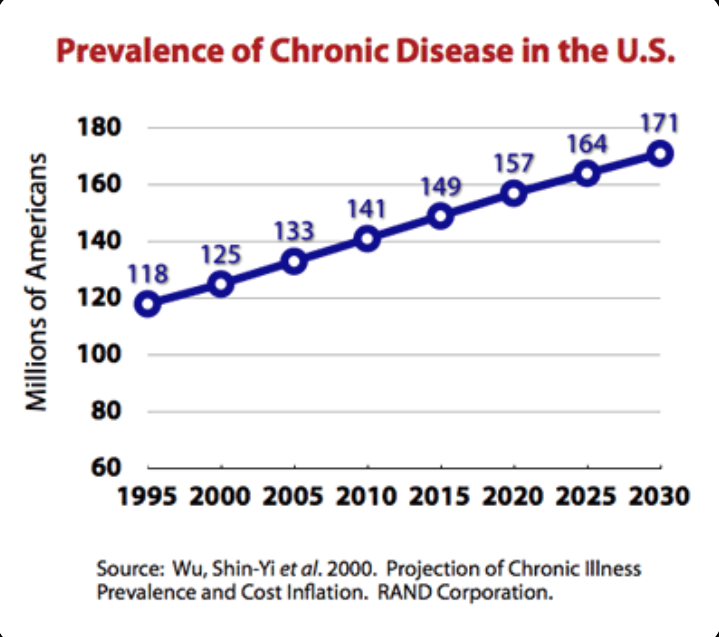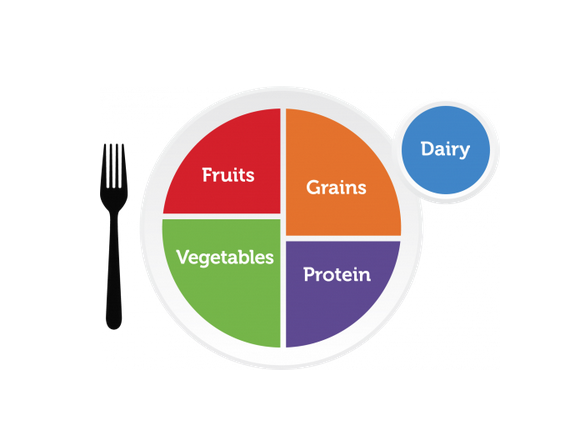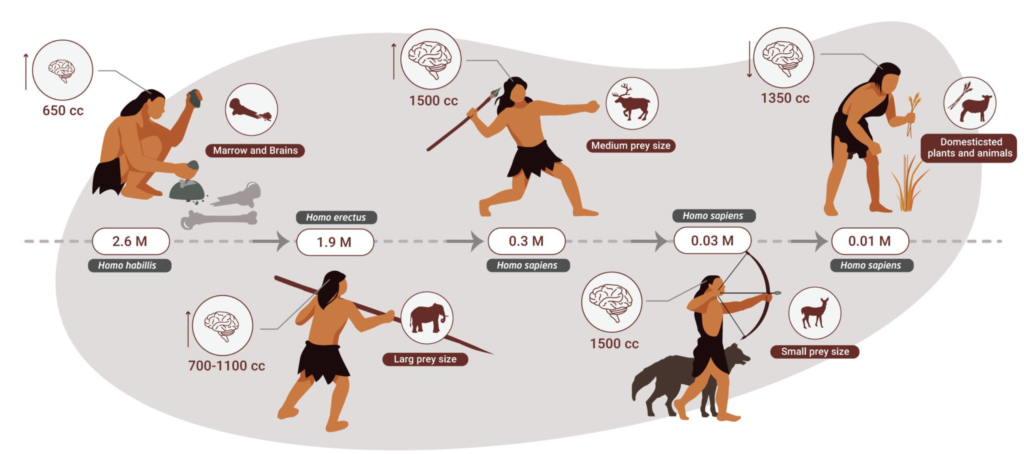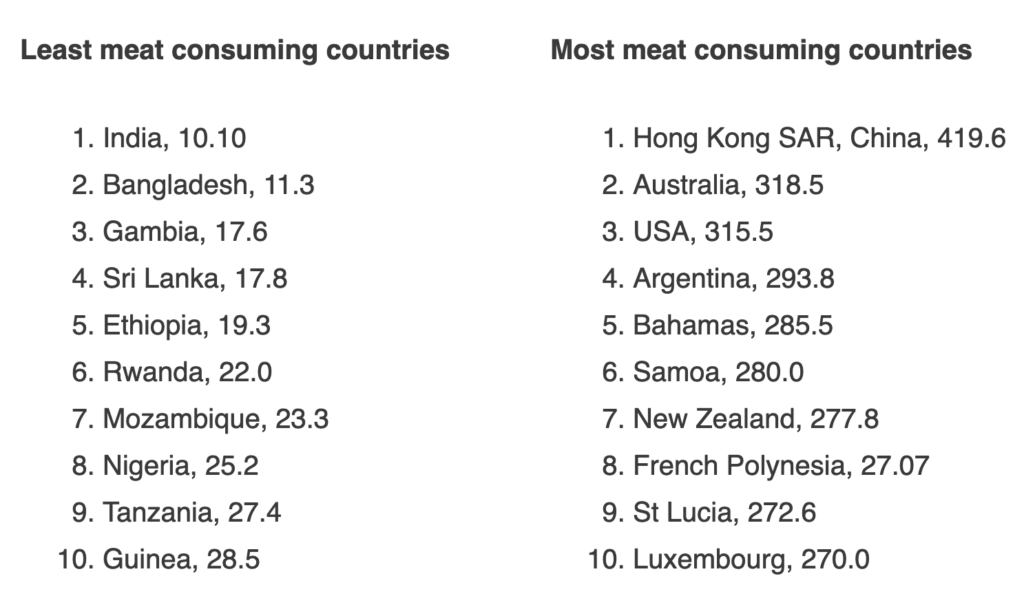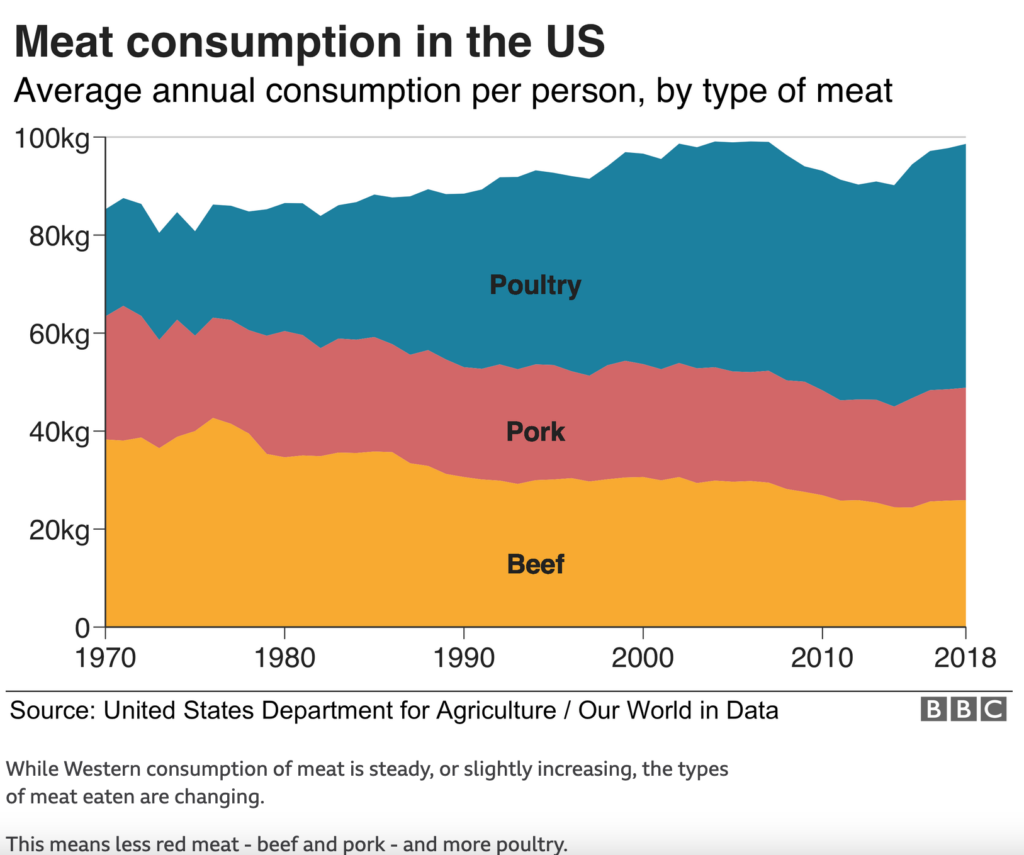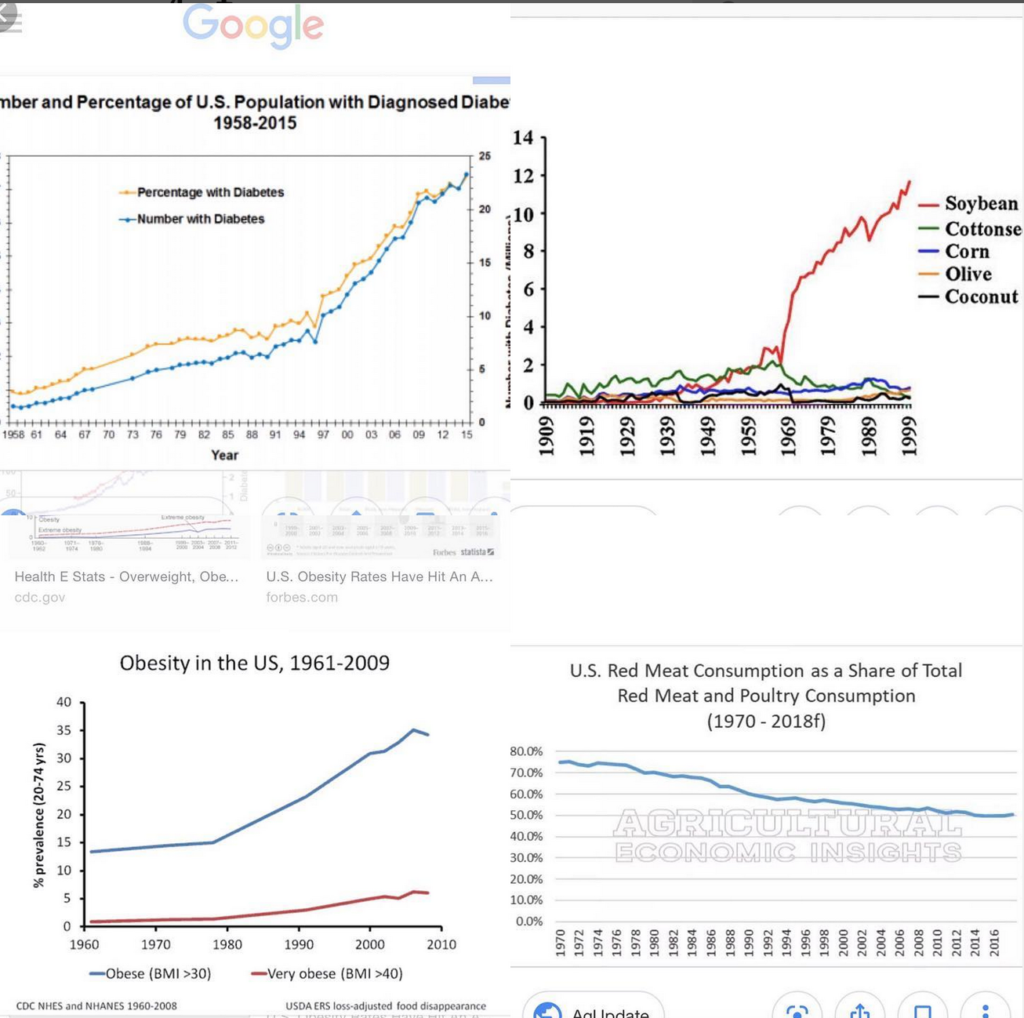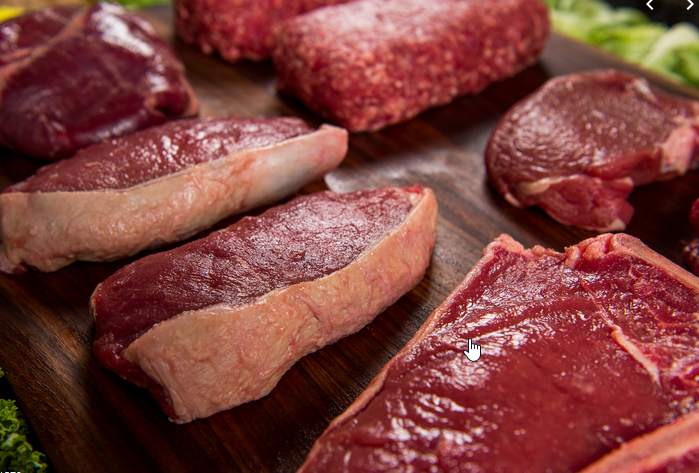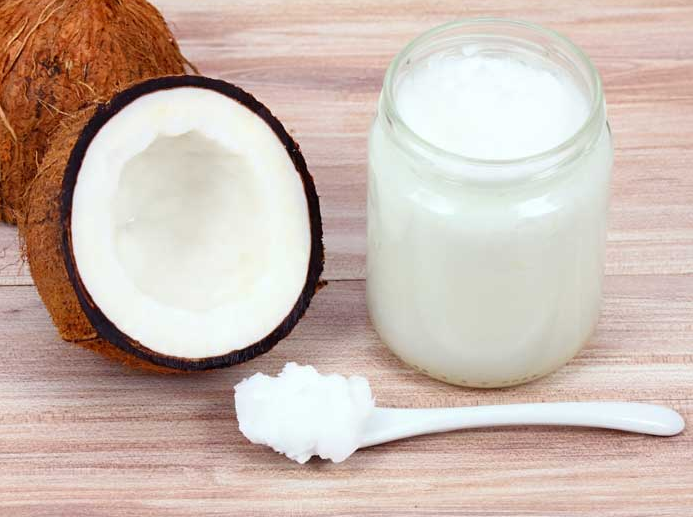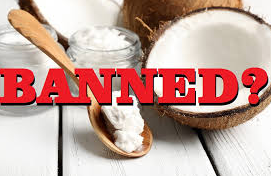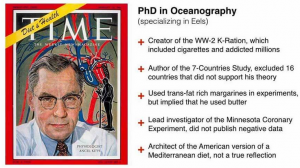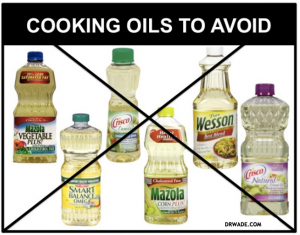As of this writing of How to do the Carnivore Diet, I have been a fairly strict carnivore (meaning 99.9% of my diet) has been meat-based for 1 year and 4 months – and I’m not dead.
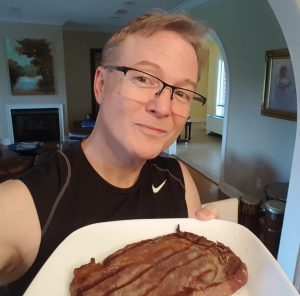
What you’re about to learn is a 12 week transition…BUT, you can certainly scrap the transition and go ALL in day 1, take 4 weeks or 8…It doesn’t matter. What matters is that you do what’s right for you so I’ve given you the information you need. Now it’s time for your to decide and take action – keep reading…
I’m 52 years old, and my health has surged to the point where I now feel as good as I did in my late 20’s, I move like I did back then, and I have rid myself of all the typical problems my age group has developed over the last several decades: joint aches and pains, stiffness, allergies, inflammatory problems, GERD, belly fat, back fat, neck fat, bloat, lack of energy and just a general slowing down. Sounds like a typical description of aging, right?
I practiced and preached plant-based, whole-food, complex carbohydrates, colorful diet, limited lean meats, saturated fat avoidance, whole-food supplementation, high fiber dietary approach. I experience the worst collection of ill health maladies over a decade, and I had to make a change.
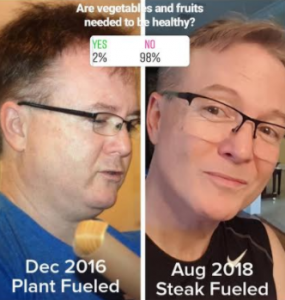
Moreover, ALL of my wellness, dietary and physical therapy clients that I worked with using plant-based approach always struggled once they got past the honeymoon phase (feeling better after eliminating junk.) Once I found the truth and started implementing more sound, sane, species-specific dietary practices, the struggles were eliminated 100% of the time. It was hard to believe such a simple change was that powerful.
I document my daily/weekly diet and results on Instagram so follow along if you dare:
]
What You’ve Been Taught is Not Working
You’ve undoubtedly been taught, much like I was, that meat should be limited. You’ve learned that you need a “balanced diet” that included carbs, proteins, and a little fat (but NO saturated fat.) Vegetables, whole grains, and fruits are supposed to be emphasized with very little meat (and of that meat, fish is recommended over red meat.)
One serious result of this faulty belief is called sarcopenia – loss of muscle. And it’s why people get weaker, experience more illness, and fall as they get older. They don’t get enough protein – namely animal-based protein. It’s even know in the medical community that this is happening, but our answer is to supplement with cheap protein like Ensure:

Gotta love those “healthy” ingredients.
Another serious result of this belief is the climbing rate of obesity, heart disease, cancer, diabetes, neurodegenerative disease, and auto-immune disease.
It has become so common to hear someone speak of themselves or a relative with one or more of these ailments. But it’s NOT NORMAL! It’s time to put a stop this this growing trend of illness, degeneration, and painful aging.
Your way of eating directly affects your physical and mental health
It’s time to return to a way of eating that is specific to what you need and what you’re made of as a human. You’re not a plant and you’re not processed food. When you eat foods that aren’t essential, you’ll eventually pay the price. Let’s avoid that tax.
Vegetables and grains are considered foods we’ve cultivated to help us survive. Animal-based nutrition helps us thrive.
First let’s remove some of the primary concerns about eating meat – our most natural food.
Meat Does Not Cause Cancer… or Any Other Problems
You may have even heard that too much meat can cause cancer, heart disease, kidney problems, and even diabetes! There is a reason for that, but it has nothing to do with the truth. If meat was such a problem, we wouldn’t be here today as a species as it’s what we subsisted off of for about 1.8 million years prior to settling and becoming farmers (about 10K years ago.)
There is no actual credible, valid, reliable evidence that shows meat causes cancer or any other problem for that matter.
In fact, the Standard American Diet (SAD) consists of 2 oz of meat per day on average. More calories in our western diet actually come from soybean oil of all things! Up to 70%! The SAD has been largely plant-based for the last several decades so the fear mongers that blame meat for all these problems like heart disease and colorectal cancer apparently have it wrong.
At the time of this writing, residents of Hong Kong lead the world in longevity with an average life expectancy of 83 years. They eat on average 1.5 pounds of meat a day!..And no it’s not all fish.
India has one of the lowest life expectancy ratings coming in at 68, and they are largely a vegetarian population (source UN data 2010-2015 Life Expectancy in Years.)
There is NO EVIDENCE that meat causes any problems whatsoever. Even the World Health Organization has red meat classified as a Class 2 carcinogen, and the science they used to support this is woefully inept. In fact a close look at these studies reveals that pizza was considered “red meat” in some of the surveys! They also didn’t account other lifestyle factors such as smoking, sedentary lifestyle, and other risky behaviors. Besides, who can remember what they ate exactly last month much less last year?! That’s what these studies are – questionnaires.
In fact, beef consumption has been on the decline for decades, yet chronic disease continues to rise. Meat is NOT the problem. Moreover, the number of cows have significantly decreased, so they can’t be blamed for climate change as some would have you believe. There are approximately ninety million cows in the U.S. today, down from a high of about one hundred forty million in 1974.
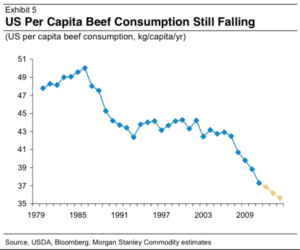
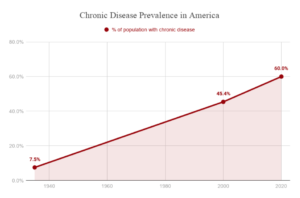
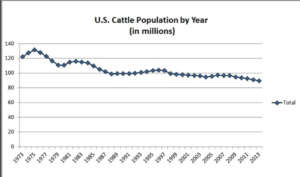
Many people think that diets have actually been studied by people in white lab coats running randomized, double blind, controlled studies with actual humans in large numbers, similar genetics, and similar age and lifestyles – NOPE. Never been done and never will be.

There is NOT ONE GOOD STUDY that proves meat (red meat or process meat) causes cancer or any other problem
Moreover, these studies are epidemiological, and they DO NOT point to the CAUSE of cancer or other problems. Most all nutritional studies are designed like this unfortunately.
For details on problems with these types of studies in nutrition Go HERE. In many cases, the data was cherry-picked to try and show correlation but the evidence again was statistically insignificant.
However the largely vegetarian board of the WHO chose to put the word out to all the governments of the world that red meat is bad and that we should eat our vegetables and shut up. Sound familiar? Of course it does! You were told that as a child! Guess what, you were right!
Veggies aren’t so good as we thought after all!
You’ve also been instructed that you should eat less, spread it throughout the day (3 meals and 2-3 small snacks) and exercise more to be truly healthy. In fact, depending on your age, your supposed to be doing around 20-40 minutes of aerobic exercise 5 times a week and more! Whew!…Again all while eating less! Talk about suffering! Moreover, that’s the reason why we have so much obesity, chronic disease, and general health decline –
Eat Less and Exercise More DOES NOT WORK!
As a physical therapist, I know that exercise is a modality or a procedure I can use in a very specific way to improve the health of a particular part of the body that needs to heal and recover from a problem. However, if someone is simply unhealthy due to a host of systemic issues, exercise will not be very effective.
Exercise is good to enhance health where health is already present. It cannot create health if there is none to begin. Diet is where health begins. Diet is first, exercise is second.
Have you ever heard “You can’t out exercise a bad diet?”… It’s True.
What About Cholesterol?
What we know about cholesterol today is that it’s bad and it clogs our heart arteries and causes heart disease and death for those who eat too much meat, right? WRONG!
This practice is called the Lipid Hypothesis, and it’s the basis for all medical education, hence why your physician is trained to put you on a statin if your total cholesterol goes over 200. The intent is to stifle your production of cholesterol to prevent its buildup and subsequent heart disease.
Based on this hypothesis, you can keep eating your crap, take a statin, and live longer with less disease. Guess what? It’s not working. Statins are not preventing heart disease or extending life. Why? The Lipid Hypothesis was proven wrong.
Eating animal fat and cholesterol is actually healthy and does not cause heart disease! The plaques of cholesterol are a result of your body’s natural repair process to fix vascular damage from eating grains, vegetable/seed oils, and sugar! Inflammation!
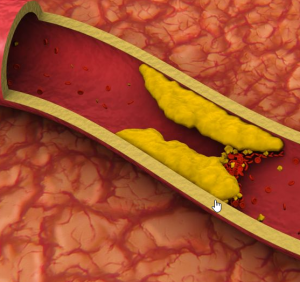
Cholesterol is just doing its job!
Simply quit eating crappy, damaging food and the problem is fixed, but it has nothing to do with cholesterol. Even in the famous Framingham Study from which all this info comes from, there was no difference in the mortality rates of those with a cholesterol of 180 vs 1000! You never heard this, did you? Nope. Even the director of the study reports that those who ate a higher fat diet lived longer with less problems than those who didn’t.
For a FULL Unbiased look at ALL the research, check out Dr. Zoe Harcombe PhD’s excellent work HERE
Understand that high cholesterol while still eating high carbs, processed foods, fast foods, junk, and meat is NOT GOOD! The problem is that the meat is getting blamed for the high cholesterol, not the junk! Stop eating junk, and stick to good meats, and cholesterol then becomes meaningless. In fact your cells and your brain are made from a lot of cholesterol. We need it!
It’s Time to Unlearn and Relearn
When looking at how to do the carnivore diet, it’s actually super simple. The hard part is to get past your fixed beliefs and your general knowledge that runs counter to what you’re about to learn! This is not really a diet as much as it is a return to a very normal way of eating. It’s NOT a FAD!
Meat eating for health has been around a long time, including modern times. In the late 1800’s Dr. Salisbury was using a meat-based approach (broiled meat and hot water) to address almost any medical ailment you can think of. He had an extremely successful cure rate. Of course, you’ve probably heard of the Atkins Diet by Dr. Atkins. People to this day still use the Atkins diet to improve their weight and their health!
By the way, medical doctors are not nutrition experts. They are experts in diagnosing and treating pathology. Treatment interventions boil down to medication, injection, or surgery. Lifestyle medicine is not yet a reimbursable form of treatment, but it’s getting there! However, when an MD or DO departs from their traditional mainstream training, and they put these methods into practice with results, you have a super expert. Physicians are the highest most rigorously trained health professionals, so they are still a great resource. Most are willing to listen to you and learn from you if your methods result in health improvement. Low Carb USA is a great resource in finding progressive physicians and qualified health care practitioners in your area.
The ONLY professionals that have a medical training background, who spend 45 min to an hour with a patient, use natural means of healing, and who focus on prevention as well as lifestyle changes are Doctors of Physical Therapy (PT’s.) However, not all PT’s practice at a high level. Many do not engage in nutritional education.
All Diets Work and All Diets Fail!
You can lose weight on any diet and like 99% of all diet participants, you’ll typically quit and regain the weight. They’re not sustainable. The carnivore diet was sustainable for more than a million years, so no worries on the “can I stay on this diet?” concern.
Contrary to contemporary diets, the Carnivore Diet does not reduce your calories and it doesn’t give you a complex array of rules. The more complex a diet is, the more apt you are to fail sooner!
You see so many people walking around, counting their steps, counting their macros, weighing their food, eating a lot of salads, making green smoothies, and even counting old school calories! Everyone is trying keep variety, color, and a balanced diet approach, again which has never worked in terms of achieving optimum health.
Complexity yields failure in dieting
The Carnivore Diet is disqualified as a diet by conventional standards, so it won’t fail. There is a chance you may decide it’s not for you and that’s fine. Food addiction is strong, and it does take effort on your part to break that addiction. The good news is that the Carnivore Diet is perfect for breaking food and carb addiction! Keep reading…
FACT: Carbohydrates are NOT ESSENTIAL
You learned that your primary fuel source is that of carbohydrates. You’ve probably also learned that there are healthy carbs and bad carbs. With all the talk about carbs today, I’ll keep it simple and just say that CARBS are NOT ESSENTIAL. They have no significant nutritional value other than energy, and you know what happens when you consume more energy than you use – you store it as FAT!
There are 2 essential foods in the human diet. We need these to survive and thrive! These 2 foods are animal fat and protein
Your early human ancestors (homosapiens) prior to agriculture were known as hunter-gatherers, and evidence shows that they were more hunter than gatherer. In other words, their diet was largely animal-based, and megafauna was the meal of the day – i.e. mastodons, woolly mammoths and the like. This food in terms of energy and survival made sense than trying to acquire the same number of calories by way of collecting vegetation.
The amount of time and energy it took to take down a slow moving herbivore was a lot less than spending hours and hours foraging for food with very little nutritional density. So it made sense to kill and eat the big boys that were eating all that stuff.
The Problem!
The problems is that we are now surrounded by food and most of it is carbohydrate and refined processed junk! We no longer have to hunt to survive. We can push a button on our phone and have any type of food brought to us.
We have refrigerators and ways of storing and processing food in order to store for long periods of time. And of course, with carbs as an immediate energy source, and with sugar being more addictive than cocaine, we often go for the sweet satisfying foods.
Our genetics are still basically the same as our ancestors, so we are designed to eat anything and everything in sight! There was no guarantee we’d have food the next few days or even longer.
Our bodies are designed to handle scarcity better than they are designed to handle over-feeding (hence all the problems such as diabetes, obesity, cancer, and stroke.) This is why so many people have reversed their health and weight problems using fasting strategies and ketogenic and carnivore dieting.
#1 They are eliminating carbs for the most part, and #2 they are using our inherent survival design of being in a healthy fasted state – this is to prepare you for the hunt and keep you alive until you acquire your next kill or meal. Insulin levels drop, human growth hormone and adrenaline ramp up – you are ready and focused!
In a fasted state, your human growth hormone levels elevate to 5 times their original levels and adrenaline kicks up – this is why you don’t lose muscle and you feel energized around the 3rd day and more of being fasted. Granted, most people use an intermittent fasting strategy that’s closer to a normal human eating frequency, but it’s still a lot.
More on this later, but just know that when learning how to do the carnivore diet, you don’t have restrictions on time or volume, and most end up eating around 1-2 times a day.
You Are a Scavenger
Carnivore, herbivore, or omnivore? Which one are you really?! You are actually an opportunistic carnivore but you have the stomach pH (acid and base level) that resembles more of what’s known as a scavenger – like a hyena or a crow. It’s very low (acidic.) We can handle some really nasty stuff, and that’s what such a low pH is for – to kill off unnecessary bacteria and other harmful substances. Carnivore’s like wolves and tigers have a little higher pH than us. Herbivores like our ape cousins, zebras, and cows have a fairly high pH.
Proof: look up any video on “high meat” and be prepared to be blown away. This is not for those with a weak constitution – it’s basically people who eat fermented meat, yes rotten meat, as many of our ancestors did. They call it high meat because you can literally feel a little euphoria after ingesting it.
Don’t worry! This is not a part of the Carnivore Diet. It’s allowed if you really want to be adventurous.
The Difference Between Carnivore and Zero Carb
You may hear the Carnivore Diet also described as the zero carb diet. When you are practicing a carnivorous diet, you aren’t eating carbs, so basically you are zero carb dieting. However, you can also be on a zero carb diet eating many calorie free foods and drinks such as certain vegatables, processed foods, and diet sodas. You can eat a really crappy unhealthy diet and be considered zero carb. The Carnivore Diet is NOT an unhealthy diet. In fact, it is the most nutrient dense way of eating you can practice in this day and time. Remember, we NEED the essentials and these are ONLY found in animal protein and fat. The best source for these 2 essentials is red meat from ruminant animals (i.e. cow, sheep, bison, goat, deer, mastodon, woolly mammoth – of which only the first 5 are available today 😉
The Carnivore Diet is a zero carb diet, but a zero carb diet is not a Carnivore Diet
What About Vitamins, Minerals, and Fiber?
I could write a book on this, and many already have . We now know that what we’ve learned about vitamins and minerals is mostly not applicable. The paper value of the amount of vitamins and minerals you might see for vegetables and fruits does not necessarily equate to what is actually used by your body.
In the 1950s is when the vitamin craze hit, and marketing strategies focused on getting people to buy food stuffs with the most vitamins regardless of what the food was made of.
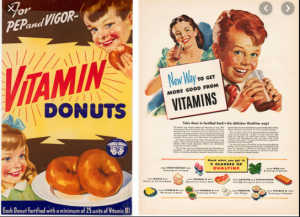
In 2007, what you know as the Recommended Daily Allowance (put forth by the USDA) of all vitamins and minerals was deemed ineffective by the Institute of Medicine. These values of vitamin C, B12, D, Calcium, etc are all basically based on “their best guess.” Not only that, but the methods used to obtain these values were based on carbohydrate-consuming populations. There is no data on populations that consume a low-carb or carnivore type diet.
Your way of eating will dictate your vitamin and mineral needs, and there is no valid set of nutritional requirements
For instance, we now know that carnivore dieters who eat meat only do not get scurvy (vitamin C deficiency,) and they do no develop atherosclerosis (hardening and clogging of the arteries.) You would think based on the information you have about vitamin C from the 1940’s (RDA for vitamin C is 65-90 mg per day with upper limit of 2000) that a meat-only diet would cause you some problems here, but it does not. Meat actually has vitamin C in it (even though the USDA never tested for it!) and it’s why fresh meat prevents and cures scurvy. This was found by the sailors of old who would get scurvy eating dried/jerky meats on long trips. They were cured with either fresh meat or fruits like oranges. Guess which food got the credit?
Eating a meat-only diet does not lead to nutritional deficiencies
This is evidenced anecdotally in people like Charles Washington who is in his 60’s and doesn’t look a day over 35 (an over 20 year carnivore.) Joe Andersen and his wife Charlene who healed all sorts of issues and look, function, and feel amazing – they are also 20+ year strict carnivores. These people can be found and followed on Facebook and Instagram.
What you never learned is that vegetables contain anti-nutrients and other constituents (natural pesticides) that deter animals, including you, from eating it! It’s why most vegetables in their original state are virtually inedible. These anti-nutrients can prevent absorption of vitamins and minerals. Not only that, it’s now known that some of these substances cause inflammatory and other problems in humans! Did you realize that only 1% of the worlds plants are actually edible. 99% of the worlds meat is edible. Hmmm.
How to Do the Carnivore Diet
I will give you my approach as I’ve used it a few different ways in practice. Absorb this information and make a decision on how you’d like to proceed.
The 12 Week Full Elimination Protocol
This is a gradual process of eliminating any and all food substances that could be affecting your health adversely over a 12 week period. You see people doing 1 and 4 week carnivore challenges, and that’s cute, but it doesn’t do anything to actually achieve the full effect of expressing the healthiest you. It takes 3 months for new cells to regenerate and those cells will be genetically expressed based on how you fuel them.
Now that your removing all but your primal, original fuel source, these will be your best cells. Honestly, it’s a 6 month process to really see how healthy you can be although most people notice results in just a few days to weeks!
Every one is different, but we are all the SAME SPECIES! So yes, we all need and thrive on meat! Now what you’ve been eating and what you’ve been made of over the last few years is going to dictate your response.
Please note that every animal has a species-specific diet – we’re the only animals that have mucked it up. The Plant-based community and money-backed vegan propaganda machines are in full force trying to convince you that you are a plant. You need to eat mostly plants and avoid the natural order by avoiding animal based produce so they can all roam free. Yeah, that sounds sane – NOT!
Follow the money and you’ll see there is much more $ in the profit margin of grain as well as plants in general. James Cameron, has invested 140 million in a pea protein company so here come the vegans and tons of ads to support veganism and plant-based dieting!
Want to cure veganism? Take away their blenders 😉
Back to sanity – Eat meat, get healthy, live a great disease-free, energetic life. Here’s how:
The Carnivore Diet Rules
PHASE I: The first 4 weeks on the Carnivore Diet
You will eat only meat, eggs, real butter, and hard aged cheeses for the first 4 weeks.
What to drink? You can keep coffee in the mix for the first 4 weeks if you’re really an addict. I understand. I was. Your liquid consumption should be limited to water – carbonated water is fine.
Eat to satiety! There is no rule and when or how much to eat.
Use plenty of salt! I recommend Redmond Real Salt. Any good sea or Celtic salt is fine. Avoid refined salt like Morton’s. Salt is your new sugar.
If you get hungry or get a craving (more on this later,) eat more meat and don’t forget SALT.
Grassfed or Store Bought? It doesn’t matter. There is an argument for grass fed having a better nutrient profile, but for the sake of what we’re doing here. It doesn’t matter. I personally preferred grass-fed/grain-finished. There is more to this, but that’s not within the scope of this article.
For the record: I fully recommend pastured animals that were raised by a farm or farmer that practices regenerative agriculture. If you have a relationship with a local farm, farmer, or butcher that uses local resources – you’re in good hands.
The cheapest meat at the store is better than eating a bunch of non-essential foods that could be causing health issues!
Ideas: Steak and Eggs!, ground beef with shredded aged cheddar and eggs! Cheeseburger patties! Steak cuts dropped in scrambled eggs with aged cheddar shredded over it – ALL with SALT! There are super good ideas and recipes if you need at MeatRx.com
Emphasize Red Meat from ruminant animals!
Cow, lamb, deer, bison, goat are the common ones.
Economic version: just stick to ground beef and eggs! Make burger patties, mix it up, prepare the eggs any way you want – the main ingredient is SALT.
If you’re concerned about too much salt intake, be sure to read “The Salt Fix” – it’s on the banner to your right. Salt is not a problem typically – more bad info we’ve been fed for many years without any evidence.
Other meats that are fine: chicken, bacon, ham, pork, and duck – these are meats from monogastric (one chambered stomach animals) animals. These meats should not be emphasized but they are fine to include. They’re considered “neutral.”
Organ Meats are great but not required
You’ll see various “experts” saying you need to eat nose-to-tail to get the most nutritional benefit from the Carnivore Diet; however, previous carnivore dieters of 20 years and more did not practice this way and they experienced no problems. Yes, organ meats, especially the liver, contain a surplus of vitamins and minerals that are perfectly absorbed (unlike veggies and fruits,) but organ meats have not been proven “essential” for optimal health.
I personally eat liver (both chicken and beef) maybe once a month -depends on convenience. I DO NOT eat kidney – sometimes you get a nasty urea hit. Heart is pretty good and you can get it blended with beef by US Wellness Meats
Phase 2: Weeks 4-8 on the Carnivore Diet
All the rules above remain!
You simply eliminate cheese. Yes you can keep your coffee, butter, eggs, and other meats.
Phase 3: Weeks 8-12 on the Carnivore Diet
Now it’s time to go FULL CARNIVORE – Red Meat and Water ONLY. Yes drop the coffee and deal with the oncoming headache and malaise! This will not be fun if you’ve been a long term coffee drinker. You can always put coffee back in later. First let’s get all plant-based substances removed.
For the next 4 weeks it’s all about having fully eliminated any substance that could have been creating a problem. Your body can now fully repair and recover without having to deal with any foreign or non-essential substance. Meat is the most natural food to your body.
Coffee does affect your gut bacteria and your adrenals (adrenal fatigue.) This is a great time to allow for a re-set of sorts. Give your body a break. You can always return to drinking coffee perhaps on a more limited scale and without the addiction.
What to Expect on the Carnivore Diet
The Adaptation Phase! This is where your body, especially your gut, adapts to this new way of eating. This usually lasts about 3 weeks.
First of all, if you’ve entered this way of eating from a SAD, you’re going to definitely experience what is known as the carb flu (first week). You’ve been using carbs for a long time as an energy source and now you’re not. Your body will give you signals that it doesn’t approve – fatigue, headache, and a little misery. Fortunately, it’s temporary!
Diarrhea is also a fairly common initial symptom (first 3 weeks.) Your gut/gallbladder has probably never processed this much protein/fat and it has to adapt. Rendered fat (burger meat) is notorious for causing this. Leaner cuts of meat like sirloin and NY Strip are generally well accepted in the beginning – and thereafter!
Weight Loss! Keep in mind, this is not exclusively a weight loss diet. Yes, most do lose substantial amounts of weight. This is more of a health restoration diet – a way to allow your physiology to return to a more normal state without inflammation. It’s a way to set a good healthy foundation from which you will have full control.
Is the Carnivore Diet for Everyone? No. There are some people who are pleased and happy with where they are physically and mentally. I only recommend making changes in your diet when you know you need to take action to improve your health – whether it be simple weight loss or addressing a health concern.
I do not recommend beating other people over the head with this diet as the only diet a human should practice. You know it’s good, I know it’s good, science shows it’s good, history shows that it’s our reason for existing – but nutrition is right next to religion and politics in many circles. Simply lead by example and You do You.
Be prepared for criticism: NO ONE…absolutely NO ONE at the time of this writing understands how healthy this approach is assuming they have the standard education background and have some version of internet access. What you’re doing will not make sense. Either don’t engage or simply let them know you are working on a food allergy protocol. I have a video for my fasting group to send “concerned people” to, and I should have one soon for your concerned people – watch for it soon!
After the 12 Week Carnivore Diet:
You can now re-introduce foods that you choose to eat and see how you react – see how you feel. The most common food/drink that people return to is coffee. Do one at a time for several days. Don’t load up on a variety.
By now, you will have learned so much about this way of eating as well as your own body. Most people simply continue with Carnivore as their base and they eat occasional other foods.
For those who have food allergies, intolerances, and sensitivities – the re-introduction phase is very important. You may have healed and can now eat the formerly provocative food – or you may not! I was lactose intolerant. Now I’m not. I also don’t have Fall Allergies – life changer for sure!
Stay connected and involved with others practicing a carnivore way of life on social media. Focus on those who are succeeding and who have done it for over a year or more.
Be sure to opt in to my Carnivore group above! There is always more to learn!
Cheers! Now go eat a steak!
The Carnivore Diet Book!
At the time of this writing the first copies of The Carnivore Diet by Dr. Shawn Baker are being released! It’s the first book that goes in depth into the complex world of nutrition and simplifies what you need to know about eating an all meat diet. There is no dogma or zealotry and there is definitely no fuzzy science like the vegans use to try and convince you that this way is the best. You are given the truth as it stands, and you can make your own decision about how you can implement this knowledge into a way of improving your health.


A must read book about the carnivore diet
Before Carnivore was cool, there was Mike Sheridan putting out how to get healthy and fit with his book “Eat Meat and Stop Jogging.” My patients and clients will tell you that I don’t use steady state cardio or running/jogging in any of my health and weight loss plans. Why? It doesn’t work and it’s more damaging that beneficial. Mike goes into detail with good scientific references. It’s a great read and must have!



